Must-Try 20 Rain Garden Ideas
Rain gardens are not only a beautiful addition to any yard but also a practical way to manage rainwater runoff and improve the environment.
These gardens capture rainwater, allowing it to soak into the ground instead of flowing into storm drains, which helps reduce erosion and pollution. Creating a DIY rain garden is a rewarding project that anyone can undertake, and here are 20 fantastic ideas to inspire you.
1. Native Plant Haven
Native plants are perfectly adapted to the local climate and soil conditions, making them ideal for rain gardens. They require less maintenance and water, providing a habitat for local wildlife.
Design Idea: A rain garden filled with native wildflowers and grasses such as Black-eyed Susans, Purple Coneflowers, and Little Bluestem will create a vibrant, low-maintenance garden that attracts pollinators like bees and butterflies. Arrange the plants in a tiered design, with taller plants at the center and shorter ones around the edges.
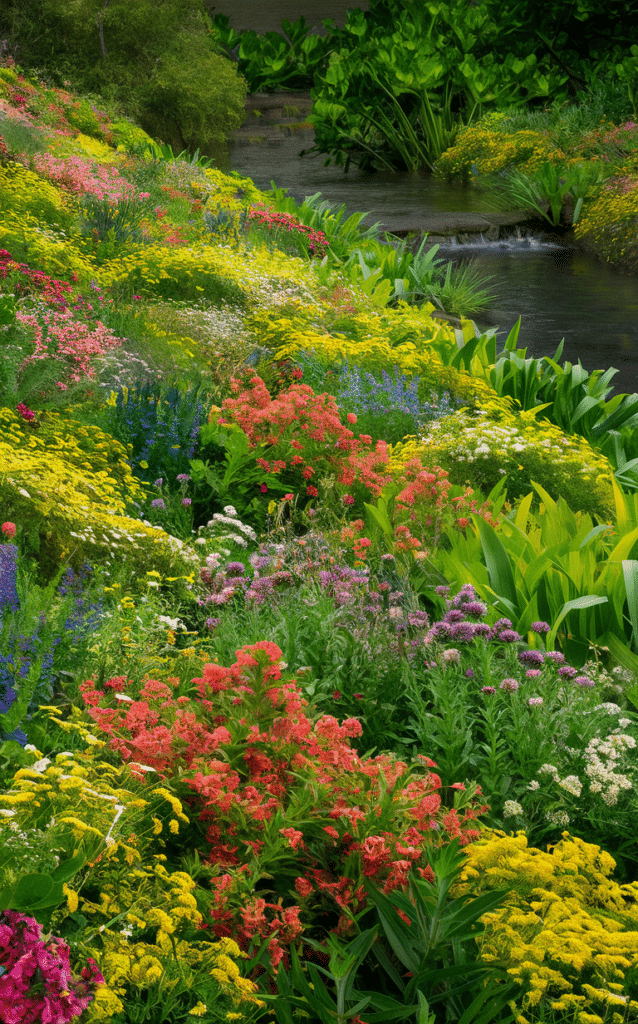
2. Butterfly Paradise
Butterflies are not only beautiful but also essential pollinators. Designing a rain garden specifically to attract butterflies can enhance your garden’s ecological value and aesthetic appeal.
Design Idea: Incorporate plants like Milkweed, Joe Pye Weed, and Asters, which are known to attract butterflies. Add a few flat stones for butterflies to bask in the sun. Position the garden in a sunny spot to ensure the plants and butterflies thrive.
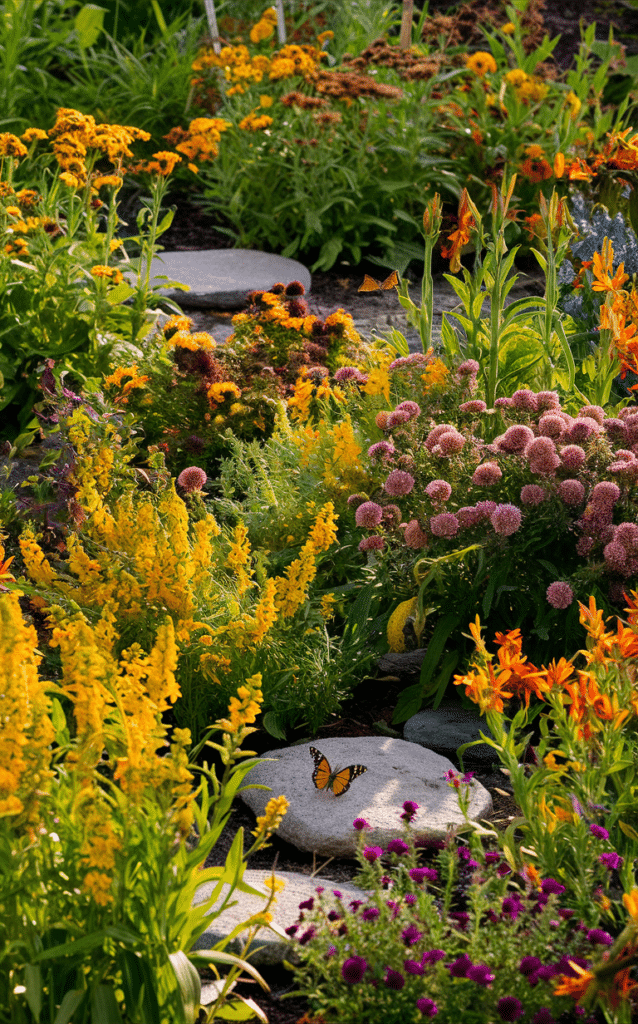
3. Zen Rain Garden
Combine the principles of a rain garden with the tranquility of a Zen garden for a unique, calming space. Use water-tolerant plants and design elements that promote relaxation and meditation.
Design Idea: Use gravel or sand for the base, incorporating water-loving plants like Japanese Iris and Soft Rush. Add a few strategically placed stones and a small bamboo fountain to create a peaceful ambiance. The garden’s design should encourage mindfulness and serenity.
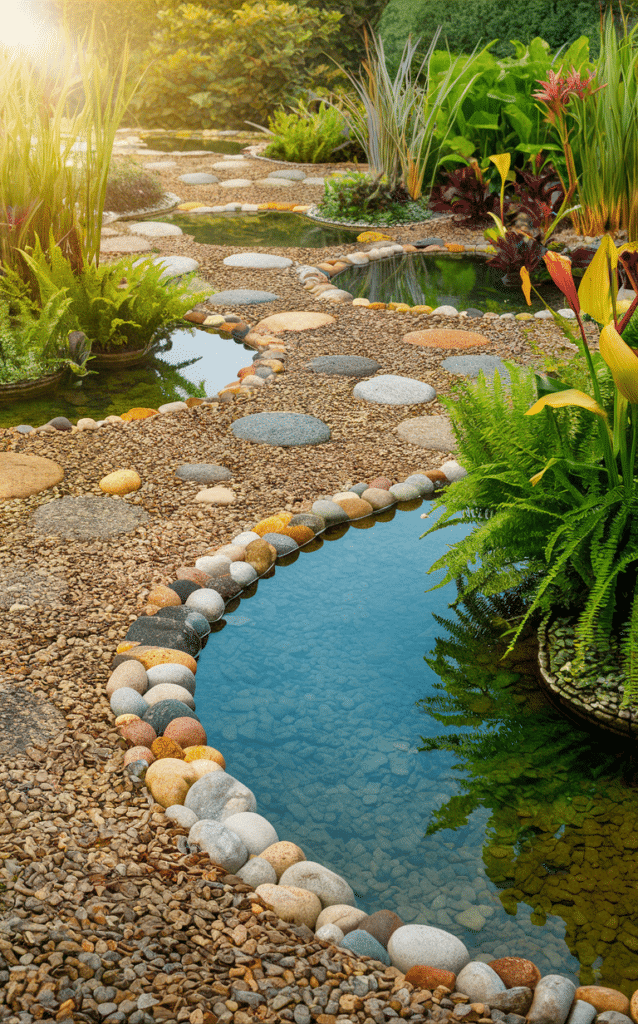
4. Edible Rain Garden
Why not combine beauty and functionality by creating an edible rain garden? This garden not only manages rainwater but also provides fresh produce for your kitchen.
Design Idea: Incorporate plants like Blueberry bushes, Mint, and Kale, which thrive in wet conditions. Arrange the garden with raised beds or mounds to ensure proper drainage. This design allows you to harvest fresh ingredients while supporting the environment.
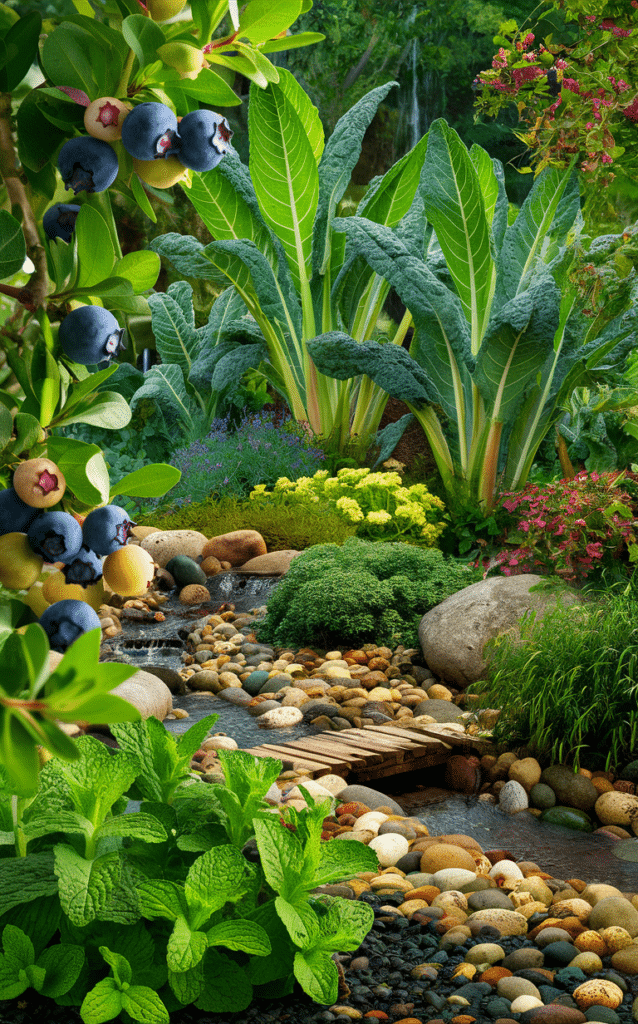
5. Bird-Friendly Oasis
Create a rain garden that attracts a variety of birds by providing food, water, and shelter. Birds add life and movement to your garden, making it more dynamic and enjoyable.
Design Idea: Include plants like Serviceberry, Elderberry, and Cardinal Flower, which produce berries and nectar loved by birds. Add a shallow birdbath or a small pond to provide a water source. Ensure there are plenty of perches and nesting spots.
6. Tropical Escape
Bring a touch of the tropics to your backyard with a tropical rain garden. Use bold, exotic plants that thrive in wet conditions to create a lush, vibrant space.
Design Idea: Incorporate plants like Canna Lilies, Elephant Ears, and Ginger. Use large, colorful foliage to create a dense, jungle-like atmosphere. Add a water feature like a small waterfall to enhance the tropical feel.
7. Cottage Charm
A cottage-style rain garden is perfect for those who love a quaint, whimsical look. Use a mix of colorful, fragrant flowers and charming garden ornaments.
Design Idea: Plant flowers like Foxgloves, Hollyhocks, and Lupines in a loosely organized fashion. Add elements like a rustic wooden fence, birdhouses, and old-fashioned garden furniture. The design should evoke a sense of nostalgia and charm.
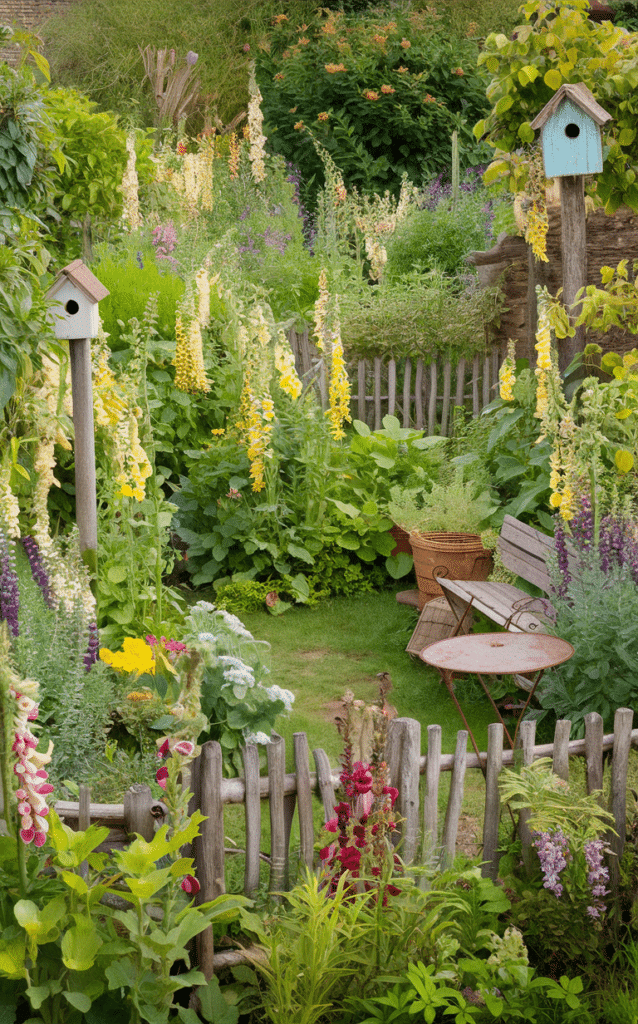
8. Modern Minimalist
For those who prefer a sleek, contemporary look, a modern minimalist rain garden is the way to go. Focus on clean lines, simple plants, and a monochromatic color scheme.
Design Idea: Use grasses like Blue Fescue and Japanese Blood Grass, along with succulents like Agave. Incorporate gravel or pebbles for ground cover and use geometric shapes for the layout. The design should be simple yet elegant.
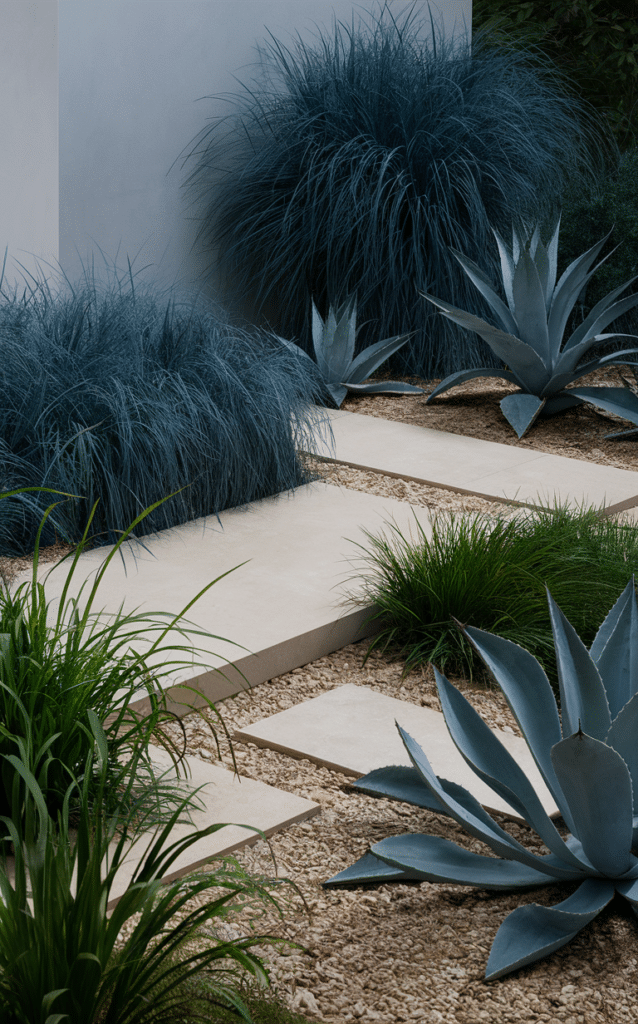
9. Woodland Wonderland
Create a woodland-inspired rain garden that mimics the natural beauty of a forest floor. Use shade-loving plants and natural elements to achieve this look.
Design Idea: Plant ferns, Hostas, and Wild Ginger in a shaded area. Add fallen logs, moss-covered rocks, and a small stream or pond to enhance the woodland feel. This design provides a cool, tranquil retreat.
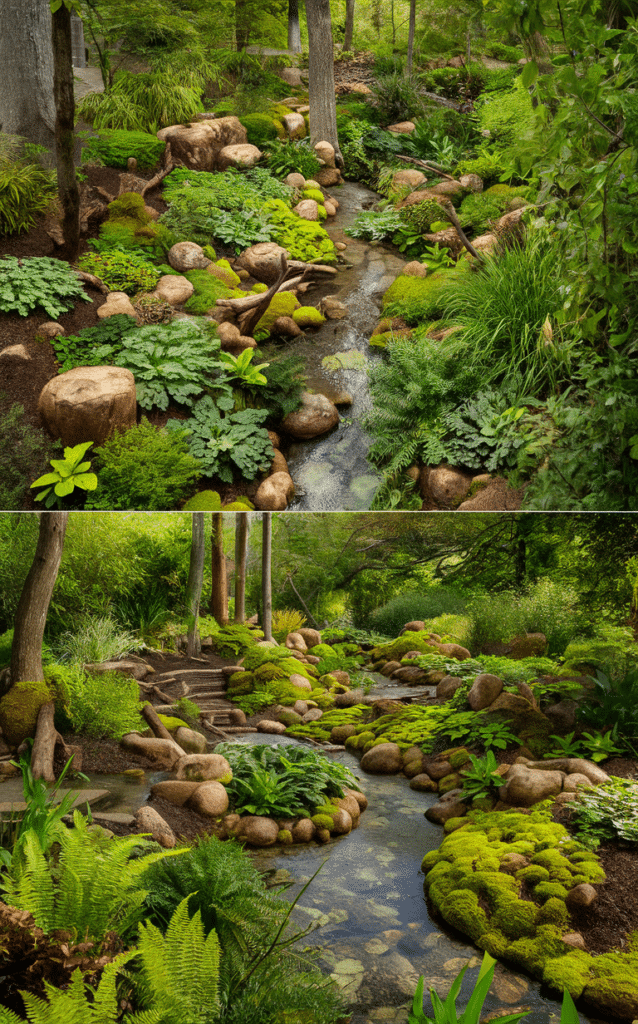
10. Pollinator Paradise
Design a rain garden specifically to attract and support pollinators like bees, butterflies, and hummingbirds. Use a variety of nectar-rich plants.
Design Idea: Incorporate plants like Bee Balm, Lavender, and Salvia. Arrange the plants in clusters to make it easier for pollinators to find them. Add a shallow dish with water and stones for bees to drink from.

11. Children’s Discovery Garden
Create a rain garden that is both educational and fun for children. Incorporate interactive elements and easy-to-grow plants.
Design Idea: Use colorful, sensory plants like Lamb’s Ear, Snapdragons, and Sunflowers. Add stepping stones, a small water feature, and educational signs about the plants and water cycle. The garden should encourage exploration and learning.
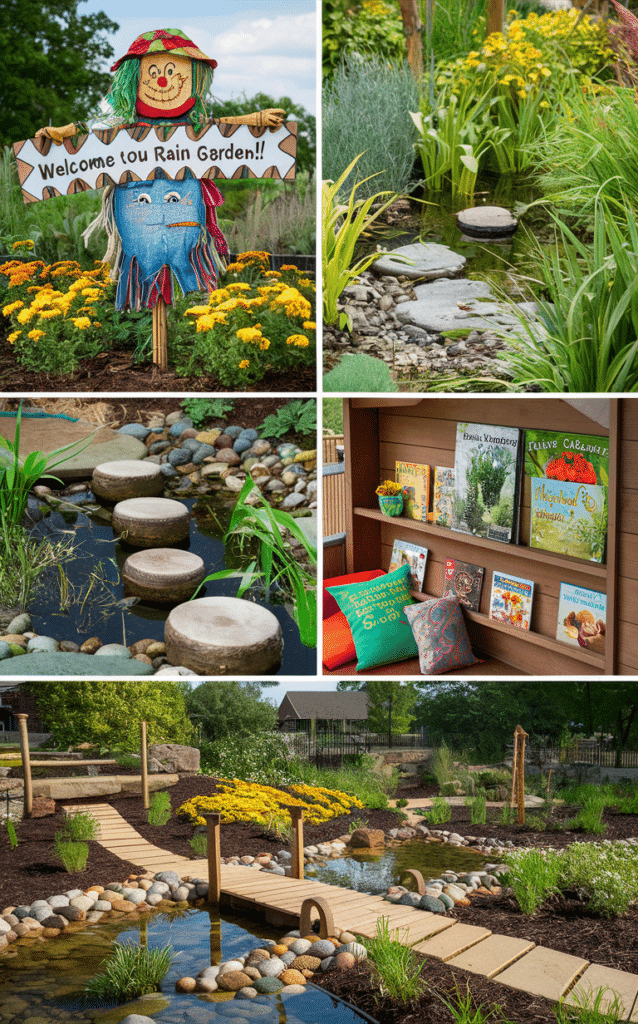
12. Rock Garden Retreat
Combine the rugged beauty of a rock garden with the functionality of a rain garden. Use stones and water-tolerant plants to create a unique landscape.
Design Idea: Place large rocks and boulders throughout the garden, planting hardy plants like Sedums, Creeping Thyme, and Ornamental Grasses between them. Add a small rock fountain for a natural water feature.
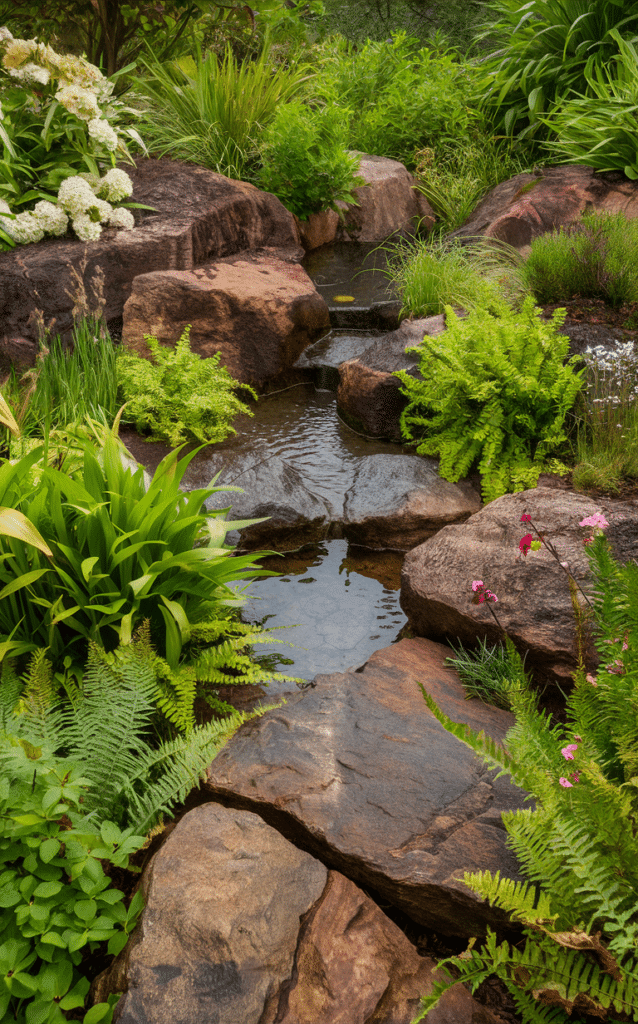
13. Urban Oasis
Even in an urban setting, you can create a beautiful rain garden. Focus on space-efficient design and plants that thrive in smaller environments.
Design Idea: Use containers and raised beds to make the most of limited space. Plant compact varieties like Dwarf Fountain Grass, Coral Bells, and Sedges. Add vertical elements like trellises with climbing plants.
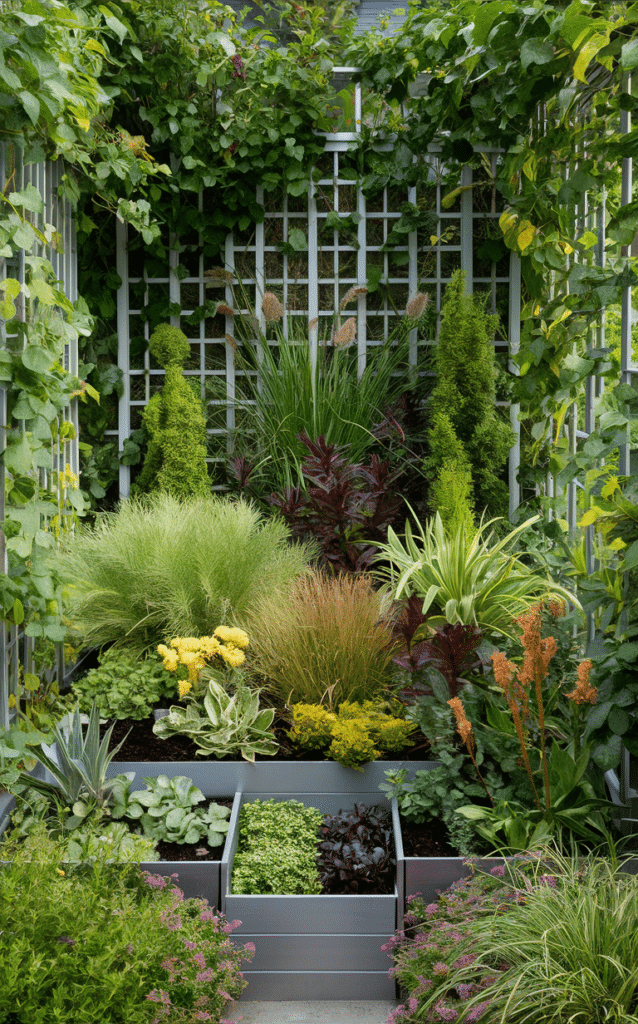
14. Rustic Retreat
Create a rain garden with a rustic, country feel. Use natural materials and traditional plants to achieve this look.
Design Idea: Plant shrubs like Hydrangeas, Daylilies, and Shasta Daisies. Incorporate elements like wooden barrels, old wagon wheels, and stone pathways. The design should feel warm and inviting.
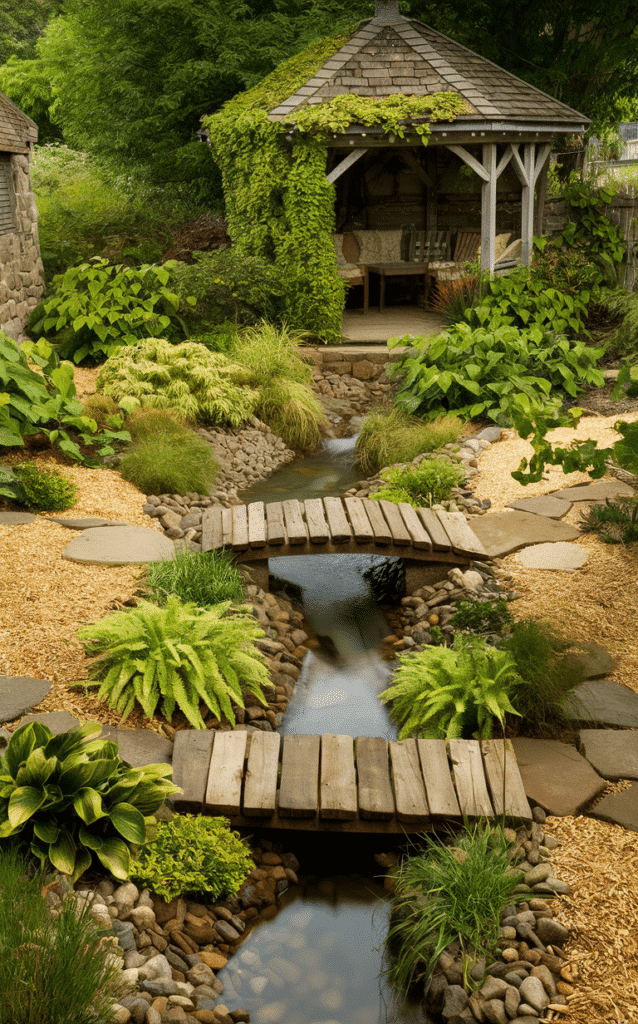
15. Wildlife Haven
Design a rain garden that provides habitat for a variety of wildlife. Use plants and features that attract birds, insects, and small animals.
Design Idea: Plant shrubs like Dogwood, Viburnum, and Spicebush. Add a small pond with a log for turtles and frogs, and create brush piles for shelter. The garden should be a thriving, diverse ecosystem.
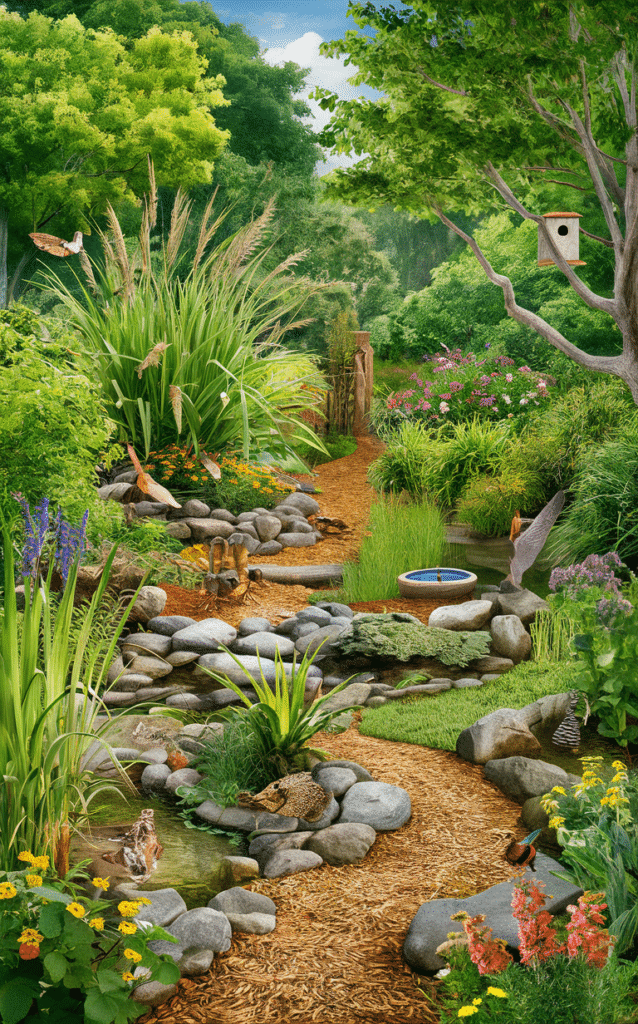
16. Coastal Charm
Bring the feel of a coastal landscape to your backyard with a beach-inspired rain garden. Use plants and materials reminiscent of the seaside.
Design Idea: Plant Sea Oats, Beach Grass, and Yarrow. Add elements like driftwood, seashells, and a sandy path. The design should evoke the relaxed atmosphere of a beach.
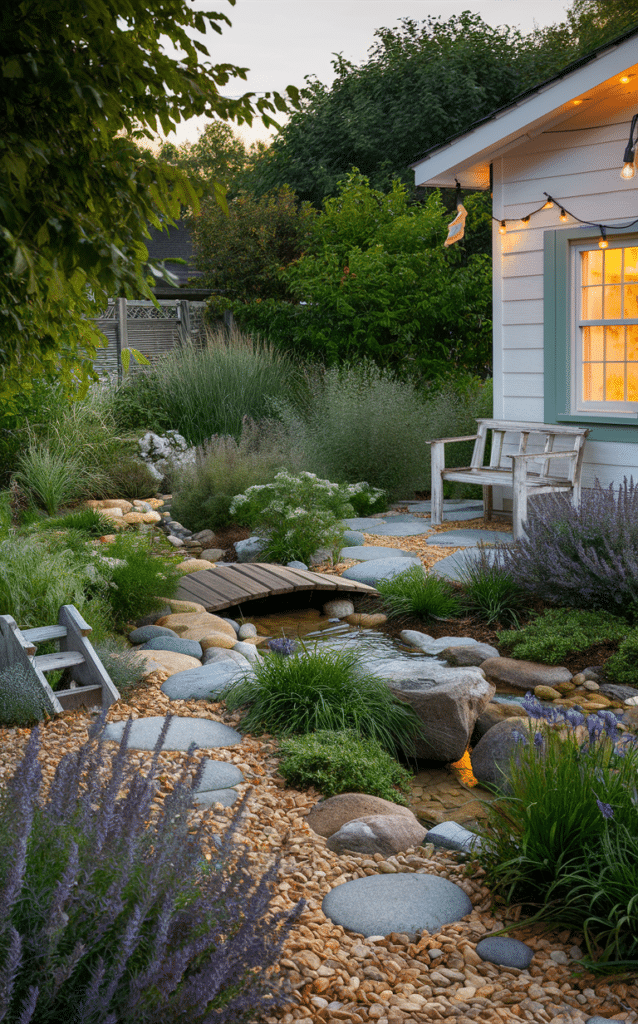
17. Perennial Paradise
Focus on perennial plants for a rain garden that provides year-round interest and requires less maintenance over time.
Design Idea: Plant perennials like Daylilies, Coneflowers, and Hostas. Arrange them in a layered design to ensure continuous blooms throughout the seasons. Add mulch to retain moisture and suppress weeds.
18. Formal Elegance
Create a rain garden with a formal, structured design. Use symmetrical layouts and classic plants to achieve a refined look.
Design Idea: Plant boxwoods, Hydrangeas, and ornamental grasses in a geometric pattern. Use edging materials like brick or stone to define the borders. Add a central focal point like a statue or sundial.
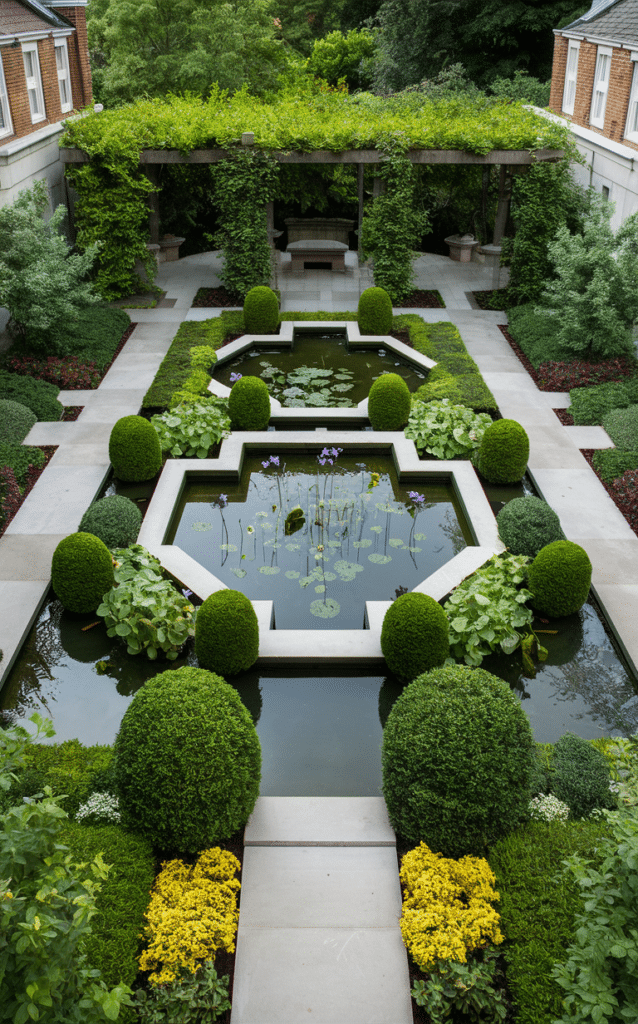
19. Seasonal Splendor
Design a rain garden that showcases different plants for each season, providing year-round visual interest.
Design Idea: Plant spring bulbs like Tulips and Daffodils, summer bloomers like Coreopsis and Echinacea, fall foliage plants like Maples, and winter interest plants like Red Twig Dogwood. The garden should change and evolve with the seasons.
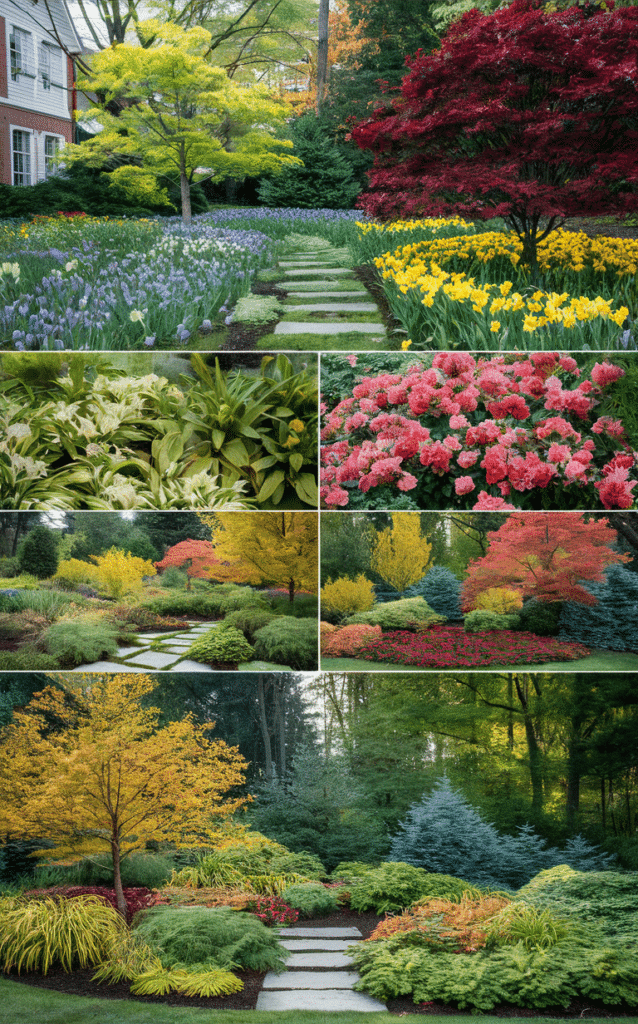
20. Mediterranean Delight
Create a Mediterranean-inspired rain garden with drought-tolerant plants and warm, earthy tones.
Design Idea: Plant Lavender, Rosemary, and Olive Trees. Use terracotta pots, stone pathways, and a gravel base to achieve the Mediterranean look. The garden should feel warm and inviting, reminiscent of the Mediterranean coast.
Creating a rain garden not only enhances the beauty of your yard but also contributes to environmental conservation. Whether you prefer a modern minimalist design or a rustic retreat, there’s a rain garden idea here for everyone. Start planning your rain garden today and enjoy the benefits of a sustainable, beautiful landscape.
